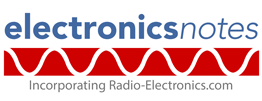VXIbus Backplane and Connectors
- details of the pin connections or pin-outs for the VXI P1, P2 and P3 connections including pin numbers and line names / functions.
VXI Technology Includes:
What is VXI test
Chassis / rack
VXIbus connectors & connections
Modules & cards
MXI
The VXIbus carries three connectors, designated P1, P2, and P3.
Of these VXI connectors only one of which is mandatory, the P1 connector.
The remaining two VXIbus connectors, the P2 and P3 ones are optional and are found on larger sized cards where more interconnectivity is required.
The connections to all three connectors are standardised and carry defined signals. In this way cards and chassis from different manufacturers can be used as required because of the use of a defined interface.
VXI backplane and card connectors
The VXI interconnection system has a number of requirements placed upon it.
Some of the key requirements are that the connectors must be reliable, easily available and standardised, they must have a high pin count and be suitable for use in a rack system like VXI where backplanes and modules or cards are used.
The VXI interface uses DIN 41612 connectors for the backplane bus interconnection system. This system follows the DIN standard, and connectors are available from a wide variety of manufacturers.
The connectors have rows of 32 pins, and the variant used for VXI has three rows, making a total of 96 connections per connector.
Female connectors on the back plane where the live power exists, and male connectors are used on the boards / modules in keeping with the conventions for the use of male and female connectors.
VXI P1 connector
The P1 connector is the only mandatory connector on the system.
It carries the data transfer bus with up to 24 bits addressing, 16 bits of data, the interrupt bus and some power connections.
Check out the list of P1 pin connections
VXI P2 connector
The P2 connector is present on all card sizes except the A sized card which is the most basic.
The P2 connector provides additional capabilities: it expands the data bus to the maximum size of 32 bits; it adds four additional power supply voltages to provide a wider selection for on-card or on-module requirements; it introduces the local bus; it carries the module identification bus that allows the module slot number to be identified. There is also the current summing bus that runs the full length of the backplane; and in addition to this there are TTL and ECL based trigger busses - there are four protocols defined. Finally there is a 10 MHz clock signal - differential ECL format.
There are different definitions for the pin-out dependent upon whether the connector is located in Slot 0 or one of the other slots, 1 - 12.
Check out the list of P2 pin connections
VXI P3 connector
The P3 connector is the least used as it is only available on the large format D-sized cards. It essentially provides additional expansion over that available on the P2 connector.
In this it provides 24 more local bus lines as well as further ECL trigger lines. Another clock is also available on this connector - it is a 100 MHz clock and there are also star trigger lines available to provide the capability for precision triggering.
 Written by Ian Poole .
Written by Ian Poole .
Experienced electronics engineer and author.
More Test Topics:
Data network analyzer
Digital Multimeter
Frequency counter
Oscilloscope
Signal generators
Spectrum analyzer
LCR meter
Dip meter, GDO
Logic analyzer
RF power meter
RF signal generator
Logic probe
PAT testing & testers
Time domain reflectometer
Vector network analyzer
PXI
GPIB
Boundary scan / JTAG
Data acquisition
Return to Test menu . . .


